5. Everything You Need To Know About Running A Car
After passing your driving test and buying a suitable vehicle, you'll then need to ensure maintaining it to a satisfactory standard. By keeping your car well maintained you'll save yourself money at the garage when it comes to MOTs and services, whilst also reducing running costs.
How to keep your vehicle well maintained
For a vehicle to perform optimally, it's crucial to ensure it's well maintained. This will help you save money on expensive fuel bills, whilst also prolonging the life of your car. There are plenty of areas to keep on top of as well when it comes to car maintenance and in this section we'll provide the best tips to do just that.
-
The Engine
With engine maintenance you'll principally be dealing with the oil. In order to ensure your engine is delivered with good quality oil, it's often recommended to check the oil regularly and have this changed every 10,000 miles or annually - whichever comes first. Of course, this is only recommended and in fact, you could change it on a more regular basis as you see fit. -
The Transmission
The transmission of your vehicle is what's responsible for taking engine power to the wheels. To ensure this process is efficient, carry out regular check-ups of the transmission fluid. -
The Battery
For many motorists, they only realise they require a new battery when it's too late and the vehicle won't start. The battery stores the energy needed to get the ignition going and regular checks will ensure it's clean, well fitting, connected properly and doesn't need replacing. -
The Emission System
The emission system runs along the bottom of your vehicle, removing harmful gases from the engine. As the exhaust hangs off the end of the vehicle it can take plenty of impact and therefore, should be inspected to ensure secure fixing and the smooth running of your car. -
The Brake System
Well maintained brakes are integral as you would expect and it's not uncommon for the pads to wear down and affect the vehicle's responsiveness when pressure is applied. If you notice anything untoward in the feeling of your brakes, it's important to have them checked out. -
Climate Control
Climate control is still a big selling point, even in modern vehicles and this system can work overtime throughout the year to keep you in a comfortable temperature. If you notice any deficiencies in the system or spot a leak, you should have the full climate control system checked out for faults. -
The Cooling System
This is responsible for keeping the temperature of your engine down. A specialist mechanic will be able to check on this system to ensure optimal coolant levels, whilst draining dirty fluid. -
The Suspension System
There are plenty of intricate fixings in your suspension that could be affected over time. After all, the suspension affects your tyres, steering and the vehicle's ability to absorb shocks. Common suspension checks will look at the power steering fluid, as well as analysing the vehicle when moving.
What to check before every car journey
Whilst there are many checks best left to a specialist car mechanic, there's also a number of things you can do to keep the vehicle well maintained. This will reduce the risk of a breakdown or of suffering trouble on the road. On top of services and MOTs, you should try to apply the following to your visual car checks.
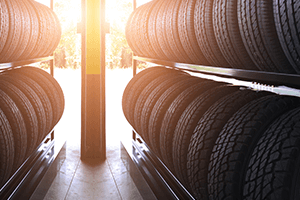
Tyres
There are two parts to keeping the tyres well maintained. This is ensuring they have the optimum air pressure and checking the tread. Low pressure levels will leave the vehicle running inefficiently, whilst the tread legally has to be a minimum of 3mm. Also keep an eye on the condition, particularly being aware of cuts and slashes.
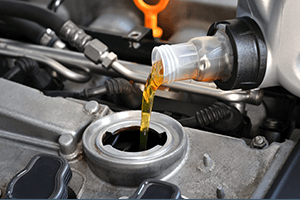
Engine oil
You can maintain your engine oil and ensure it's kept to the minimum level with the dipstick. High oil consumption would indicate engine problems.
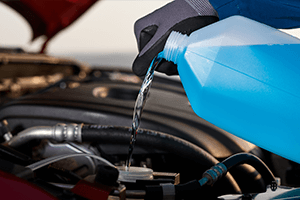
Water
The water or coolant level also needs to be within advised parameters. Over winter it's also recommended to include a large concentration of antifreeze in the mixture.
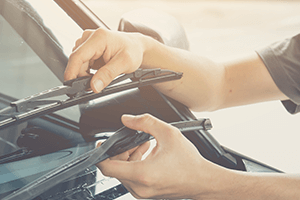
Wipers
Your windscreen's wiper blades are prone to wearing down and as such, won't remove water efficiently when needed. They're relatively cheap to replace and fit though.
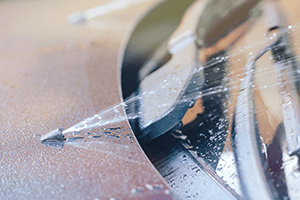
Screen wash
Screen wash aids wiper blades in removing dirt and grime from your windscreen. Water alone isn't good enough to do this, so ensure screen wash has been used.
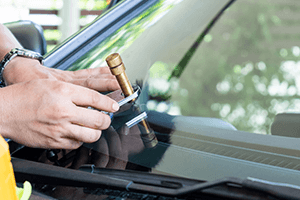
Windscreen
Whilst your screen won't need to be replaced often, it's important to have chips and cracks looked at as soon as possible. Even the smallest of chips can quickly get out of control and often it's cheap to have fixed in the first instance. The longer you leave it, the more likely you'll be to need a full replacement windscreen.
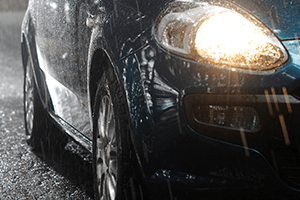
Lights
This includes all lights on your car, such as head lights, full beams, brake lights and rear lights. Ensure to clean the areas with a wet cloth, whilst also monitoring for any blown bulbs. At night and in poor weather you'll particularly rely on vehicle lights.
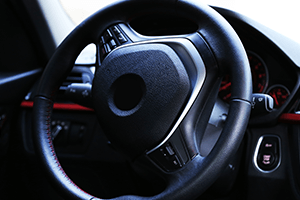
Power steering
The power steering fluid should be checked at every service, but you can carry out manual checks if you wish too. Simply ensure the fluid is within the advised levels. You can find out more in the vehicle's handbook.
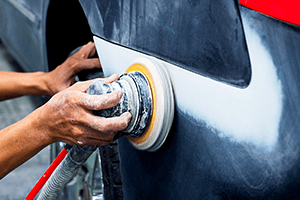
Body work
In particular, you'll want to prevent rust setting in, so make sure to carry out regular checks and have this dealt with as soon as possible.
Your guide to MOTs & servicing
With every vehicle manufactured there'll be a service schedule recommended for the car to follow. Typically, there can be anywhere between 65-85 checks included. Of course, this differs between manufacturers and models, but it's important to abide by the schedule to ensure not invalidating the warranty.
With MOTs and services there's often quite a bit of overlap. In fact, experts suggest up to 85% of a service is included in the annual MOT.
For vehicles out of their warranty period, garages will have their own set of services. These would be classed typically as:
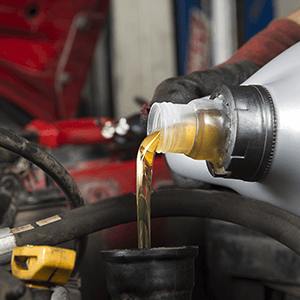
Oil & Filter Change
The oil and filter change is hugely important and recommended by all those in the motor trade. It'll help your vehicle to operate more efficiently, whilst also reducing the amount of fuel it consumes. If you're booked in for an oil and filter change, the garage will still carry out a visual review, but won't look into other aspects of the car's running, such as a brake check.
Basic or Interim Service
When booking a basic or interim service, you'll receive an oil and filter change and visual review as standard. Then, to build on this you'll likely have a top up of all the key fluids. This would include brake fluid, steering fluid, antifreeze and more. Some garages will also perform a check on up to 35 components, so it's worth finding out what's included.
MOT Service
Some motorists won't want to be without their vehicle twice a year and as such, book in for an MOT service, whereby both are performed at the same time. By doing this there's also the chance to save a little money over the year but of course, it'll be more expensive than a standalone service or MOT.
Full Service
With a full service, you'll enjoy all the benefits of a basic check, whilst also including up to 30 more checks. As with all services, if anything is found to be needing extra work, there'll be a separate charge for this.
Major Service
A major service will include everything in a full service, then add extras such as changing spark plugs and/or fuel filters. This would be included in the quoted price, so just be sure to check what is and isn't included between the different offerings.
Manufacturer Service
A manufacturer service is specific to the vehicle and will be a set price as agreed by the quote. Only repair work will be added to this cost. Those with new cars often prefer going straight to the manufacturer for MOTs and services, because whilst these may be costlier, ensure the vehicle is specially checked up on.
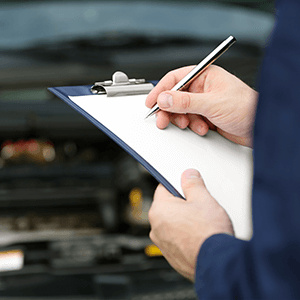
MOTs
Any vehicle older than three years is legally required to have an annual MOT. The MOT is designed to test the vehicle and ensure it's fit for the road, by meeting the minimum safety and environmental standards. Remember, the MOT would not suggest the vehicle is roadworthy for the duration of the MOT - only at the time of the test.
MOT fees are set by the Department for Transport, not subject for VAT. They are as follows:
- Car - £54.85
- Solo motorcycle - £29.65
- Three-wheeler - £37.80.
The MOT will include a number of aspects to ensure the vehicle's roadworthiness. These include but are not limited to:
- Lights
- Brakes
- Steering
- Tyres
- Seat belts
- Exhaust
- Windscreen
- Suspension
- Electrical equipment.
If you're planning to buy a vehicle in the near future, it's important to check when the MOT is due. If a vehicle is due an MOT in the next few months, this brings about the chance of haggling a better price, as you'll have to fork out for the MOT and any possible repairs as a result.
Also, bear in mind the possibility of a fraudulent MOT certificate. You can check the status of a vehicle's MOT by simply using the DVLA website. Be particularly aware of the mileage and how many miles it has driven between services. Discrepancies could be linked to fraudulent activity.
MOT penalties
If you fail to MOT your vehicle and continue using the car, you could face a maximum fine of £1,000. If this vehicle has the potential to carry more than eight passengers, this can be increased to £2,500.
There are no penalty points applied to your license for failing to arrange an MOT.
What to do if your vehicle breaks down
For many motorists, there's only a feeling of dread when thinking about a breakdown. To be left stranded on the side of the road with a non-working vehicle can be a significant worry, especially when the repair bills could stretch into the hundreds or even thousands of pounds.
However, if you do find your car to breakdown on the roadside, it's important to know the right measures to take to ensure safety and get aid as quickly as possible.
It's common for vehicles to breakdown on the motorway and because of the high speeds, can be particularly dangerous. As such, it's important not to panic. This is what the hard shoulder is designed for, so it's important to navigate your car to this area as quickly and safely as possible.
Remember, a hard shoulder is not designed for:
- Bathroom breaks
- To use a mobile phone
- To check your route.
It's purely for the case of emergencies and when there is a fault with your vehicle.
If you break down on the motorway, you should apply the following to the situation:
- Pull up on the hard shoulder and position the vehicle as far left as possible
- Keep your side lights on and also use hazard lights to warn other motorists
- Only get out of the vehicle on the left-hand-side and advise all passengers to do the same
- Keep all animals in the vehicle or under full control on the verge
- Wear reflective jackets if available
- Relocate to the other side of the barrier.
Once you, your passengers and the vehicle are all safe, it's time to call for help. There are numerous Driver Location Signs, with reference numbers on telephones and marker posts. Ensure to state this when calling a roadside assistance company.
Emergency telephones are available if you don't have a mobile phone to hand. This is a free-to-use phone and will connect directly to police and the Highways Agency. Help will then be on its way, so ensure to keep behind the barrier near your vehicle until assistance has reached you.
Emerging back onto the motorway:
If your vehicle can continue to be driven, you'll need to emerge back into fast moving traffic. It's important to build up speed on the hard shoulder and then wait for a safe place to re-join the road. Also ensure to be aware of other stationary vehicles ahead on the hard shoulder.